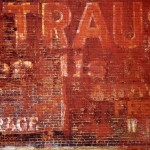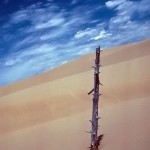There are thousands of slides in these boxes.

The old slide scanner has been out of commission for years, a victim of changing technology. The old SCSI interface is not supported on modern computers. I have often considered replacing it, but for whatever reason the idea has been delayed until now.
One of the better slide scanners available is the Plustek 7600i. I stumbled across a listing for rebuilt units on eBay, direct from the manufacturer. $245 with shipping was a great deal, one I could not resist.

So far I am impressed with the results. After a morning of experimentation I have learned to extract decent scans from the machine. The SilverFast software allows a great deal of control, and a bit of a learning curve to overcome. The color seems good, the color correction ability of the software is excellent. This could be improved by use of a calibration target, another item to locate and buy? The dust correction works, but must be used lightly or it will attack bold edges in the image. Underexposed images are trouble, noise becomes an issue when exposure is corrected. This bodes poorly for astrophotos, of which there are a few somewhere in the boxes.

Scan time is not exactly fast. With all of the features turned on, the setup I will most likely use, each slide takes about 80 seconds to scan. This includes the IR scan for dust and multiple exposures to extract as much dynamic range as possible. Add cleaning and setup time means this can be over two minutes per image.
The slides seem to be in excellent shape. I have yet to find any obvious damage or fading despite their age. Some of the images are three decades old. Still, transferring the data to a digital format seems prudent for preservation. I will not discard the slides after scanning, the media may prove more durable than digital in the end.
The single most useful utility of the scanner is simply access, to allow me to reclaim the visual imagery of a lifetime. The idea is to scan a few at a time, and to continue for as long as necessary to transfer all of the images to disk. The scanner seems to do this with acceptable quality. It will take years to accomplish. Will the plan actually work?

